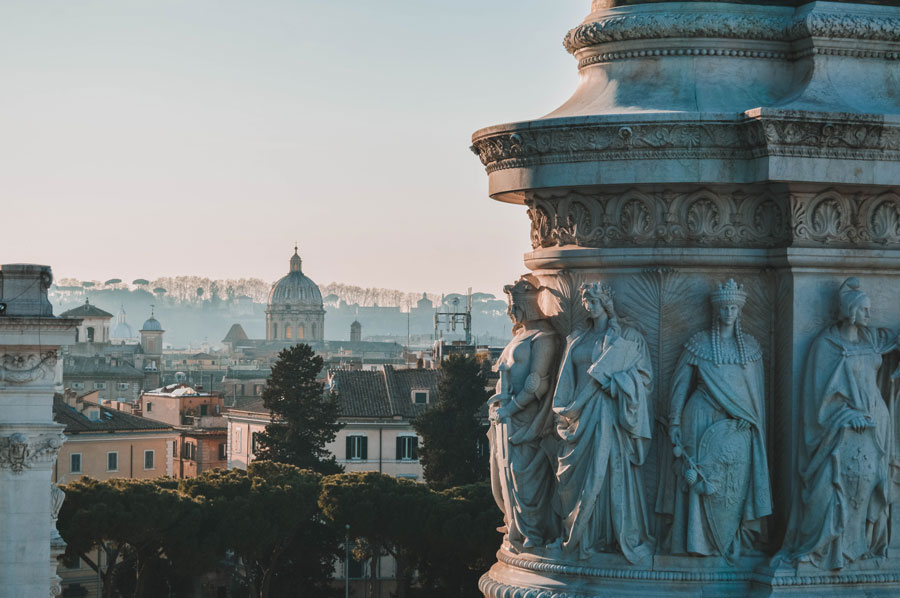
Five Quick Points About Italy
- Highly developed, industrialised economy
- One of the most appreciated cultures in the world (and beautiful language)
- Incredible food and wine traditions
- More UNESCO World Heritage sites than any other country
- Sophisticated tourism infrastructure makes studying in Italy very pleasant
Location and Geography

Italy, with a total area of 301,230 square kilometres, is a long, boot-shaped peninsula extending into the Mediterranean Sea, plus the islands of Sicily and Sardinia. (San Marino and Vatican City are small autonomous states embedded in Italy). France, Switzerland, Austria, and Slovenia adjoin to the north, the Adriatic and Ionian Seas are to the east, and the Tyrrhenian Sea is to the west. Most of Italy is rugged, mountainous terrain with the Alps in the north and the Apennines running the entire length of the peninsula to Sicily. Rome is the capital city.
The predominant climate is Mediterranean (cold, wet winters and warm, dry summers). Significant variations occur in the mountainous areas (Alps and Apennines) with long, cold winters and short, cool summers. The south has mild winters and long, hot, dry summers.
Economy of Italy
Italy has a diversified industrial economy comprising a developed industrial north and a less-developed agricultural south with high unemployment. High-quality consumer goods are produced by small- and medium-sized enterprises. Export highlights include fashion, automobiles, appliances, and industrial goods. Tourism now contributes more to the economy than agriculture. Italy faces some significant challenges to its economy, including the national debt level, high taxation, rigid labour laws, an expensive pension system, and an ageing population. At the same time, the country boasts a high quality of life in terms of work-life balance, income and wealth, social connections, and health status, according to the OECD.
Italy ranks as the eighth largest economy in the world according to the International Monetary Fund. It is a member of the G8 industrialized nations, the EU, and the OECD. The currency is the Euro.
Living Conditions and Cost of Living
Living costs can be high in Italy, especially in big cities like Rome. Italy ranks among the highest taxed countries in the world and among the most expensive EU countries for living costs. Actual costs are difficult to determine as inflation has been increasing steadily for several years. A very rough estimate figure is around €1,000–€1,500 per month for accommodation, food, and other living expenses in a city like Milan, and a bit less in smaller cities.
Tuition fees vary considerably for EU and non-EU, and between public and private institutions.
Education System
There are roughly 90 higher education institutions in Italy; more than half of these are publicly funded universities, but there are higher schools of design/polytechnics, higher integrated technical education, and training institutions). Scuola Superiore Universitoria are institutions that specialise in masters’ and post-graduate programmes. And there are many language and culture schools.
Immigration and Visas
International students from EU countries do not require a visa to study in Italy. All other nationalities must apply for a student visa at least three months prior to expected date of arrival. For up-to-date information on student visa requirements, prospective international students should contact the embassy or consulates in their home country.
